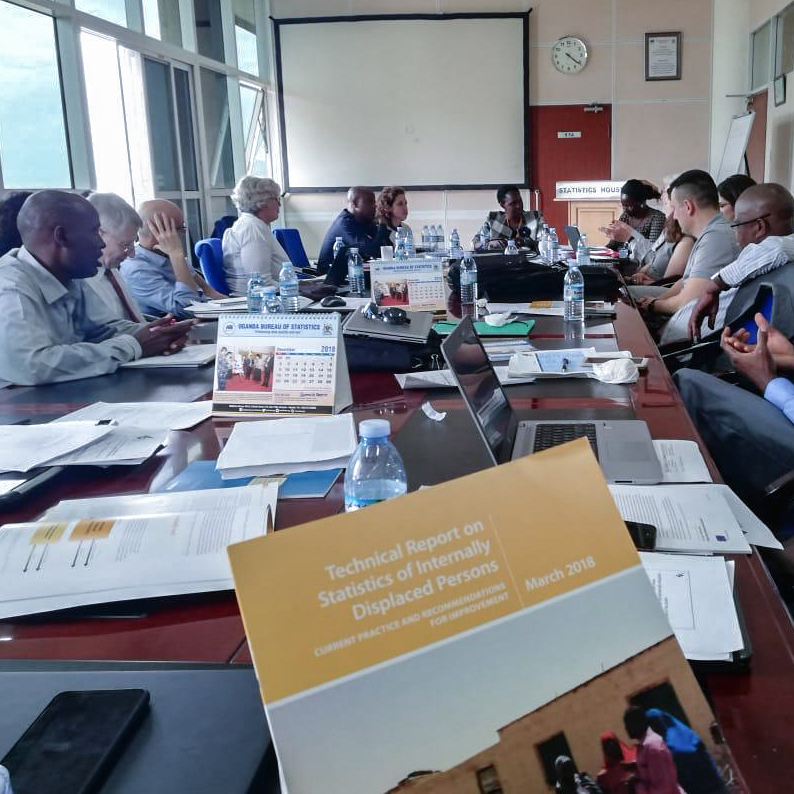At the beginning of December all members of the IDP subgroup of the Expert Group on Refugee and IDP Statistics (EGRIS) gathered together in Kampala to discuss the finalisation of the International Recommendations on IDP Statistics (IRIS). The group had an ambitious workplan and important decisions to make in relation to outstanding topics from our working session in last August in Geneva: clearly defining the population groups in the scope of the IRIS, clarifying how to statistically measure solutions as well as coordinate IDP statistics.
Co-organised by the Uganda Bureau of Statistics (UBOS) and JIPS, the event was hosted at UBOS’ Statistics House in Kampala and co-funded by the World Bank, JIPS and UNHCR. It demonstrated member countries’ leadership – an element that is also at the core of the work of EGRIS. We were also happy to welcome new countries and actors joining the Expert Group, including Nigeria’s National Bureau Statistics and Georgia’s National Statistics Office, UN Economic Commission for Africa – African Centre for Statistics and the African Development Bank.
The meeting was fruitful and the discussions have paved the way for the finalisation of the draft recommendations on IDP statistics to be submitted to the UNSC at its 51st session in 2020.

Should it matter how far someone moves in order to be considered an IDP? And how should the time factor be captured? The joint decision taken in Kampala provides clarification on these questions from the perspective of the statistical definition of an IDP:
What about people returning from seeking international protection, such as returning refugees: should they be in the scope of IRIS? The EGRIS IDP subgroup decided that these populations are out of scope for the IRIS. However, they are covered in the International Recommendation on Refugee Statistics, and should be counted as IDPs if they are further displaced upon return.
As briefly discussed in our previous article, while statistically measuring the event of internal displacement is relatively easy, no internationally agreed-upon statistical measurement for the end of displacement exists. Building off the IASC Framework on Durable Solutions and the technical report discussions, a proposed list of five themes and ten related indicators for the statistical measurement for solutions was elaborated. Hence, in addition to the four themes identified as priorities by the IASC framework, we also prioritised the fifth one on access to documentation due to its salience in IDP contexts and connection to vulnerability:
During the meeting, we also looked at the relationship between this measurement and population/stock figures, as well as the comparison with other population groups. However, further discussion is needed to finalise the indicators, including examining their measurability and feasibility in IDP contexts and better understanding their interaction with each other.

One of the main uses of international recommendations on IDP statistics is to allow for statistical comparison between countries. “A somewhat overlooked but critical topic”, as we mentioned in our last article. This requires coordination mechanisms/standards on national, regional and international level in the production and dissemination of IDP statistics, especially in regards to the following questions:
The draft recommendations will cover both elements to set the ground for a clear distinction between operational data and official statistics, as well as coordination structures and mechanisms on national and international level.
As a next step, we will work within the IDP subgroup to finalise the draft recommendations. In addition, an Expert Group all-members meeting will take place in Ankara in February 2019 to review work on the draft Compilers Manual.